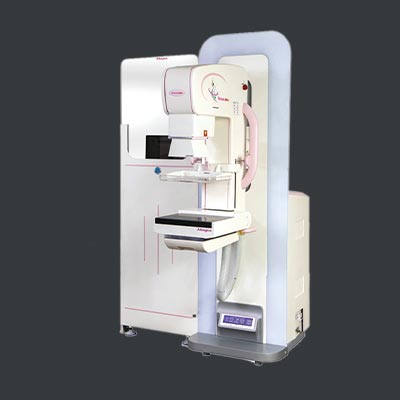Digital mammography, a revolutionary advancement in medical imaging, has transformed the landscape of breast cancer detection and diagnosis. This cutting-edge technology has redefined traditional mammography methods, offering enhanced performance, a broader range of applications, and numerous advantages. In this comprehensive exploration, we delve into the intricacies of digital mammography, shedding light on how it performs, its diverse uses, and the significant advantages it brings to the realm of healthcare.
What is Digital Mammography ?
Digital mammography is a state-of-the-art imaging technique that replaces conventional film-based mammography with electronic detectors. Unlike traditional methods, which use X-ray film to capture and develop images, digital mammography converts X-ray signals into digital images, allowing for faster processing and improved image quality. This technological breakthrough has paved the way for more accurate and efficient breast cancer screening.

How Digital Mammography Works
The process of digital mammography involves the use of X-rays to capture detailed images of the breast tissue. Electronic detectors convert these X-ray signals into digital data, creating high-resolution images that can be manipulated and analyzed on computer screens. This digital format not only facilitates easier storage and retrieval but also enables healthcare professionals to enhance and zoom into specific areas for a more detailed examination.
Uses of Digital Mammography
Breast Cancer Screening
Digital mammography is primarily employed for breast cancer screening in asymptomatic women. It allows for the early detection of abnormalities, significantly improving the chances of successful treatment
Diagnostic Imaging
In cases where further investigation is required due to symptoms or abnormalities detected during screening, digital mammography plays a crucial role in diagnostic imaging. It provides detailed images that aid in the accurate diagnosis of breast conditions.
Guidance for Biopsies
Digital mammography assists in guiding healthcare professionals during breast biopsies. The detailed images help pinpoint the exact location of suspicious areas, ensuring precise and targeted tissue sampling.
Advantages of Digital Mammography
Improved Image Quality
Digital mammography produces higher resolution images, leading to improved visibility of small lesions and subtle abnormalities that might go unnoticed in traditional film-based mammography.
Enhanced Sensitivity
The technology's increased sensitivity allows for the detection of breast abnormalities at earlier stages, providing a crucial advantage in the fight against breast cancer.
Faster Results
Digital mammography expedites the image acquisition and processing process, resulting in quicker results. This rapid turnaround time is particularly beneficial for patients and healthcare providers alike.
Digital Storage and Retrieval
Unlike traditional film records, digital mammography images can be easily stored, archived, and retrieved for future reference. This facilitates seamless communication and collaboration among healthcare professionals.
Digital mammography stands as a beacon of progress in the field of medical imaging, offering a myriad of benefits in breast cancer detection and diagnosis. Its superior image quality, diverse applications, and time-saving advantages position it as a cornerstone in the ongoing effort to combat breast cancer and improve patient outcomes. As technology continues to advance, digital mammography remains at the forefront, driving innovation and shaping the future of healthcare.
